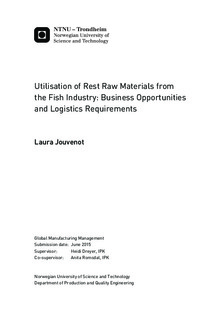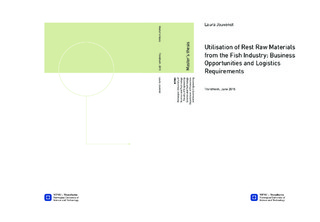| dc.description.abstract | Fish is a limited resource, and sustainability concerns arise as fish stocks and catches are decreasing. Present capture production is around 80 million tonnes per year (FAO, 2014b), and in some areas, the maximum long-term potential of fisheries has been reached. As global fish farming increases, the aquaculture industry will continue to request marine feed ingredients, and higher utilisation of rest raw materials is an alternative. The marine resources however, are limited and an optimal utilisation of all the available material is essential (Falch et al., 2007). This brings two main challenges: the first is to get the maximum quantity and quality out of the catch of high value-added raw material. The second is to upgrade low value-added raw material.
Research shows the highest potential for untapped resources lies in onboard processing rest raw materials that are for now discarded into the sea. Rest raw materials differ in relation with the types of onboard processing, but the main materials are heads, viscera, trimmings, bones and cartilage, hide, tails. Those materials have many utilisation opportunities, which require different treatments and bring a wide range of products with different values. Among them are fish oils, fishmeal, nutritional products, cosmetics or pharmaceutical ingredients. In order to increase the utilisation share of onboard processing waste, logistics solutions are required. One conceptual solution was presented in this thesis. The production of low-value products from the rest raw materials might not however offset the costs of such a solution, and the development of high-value products and of their market is required in order to make it cost-efficient. Upgrading the utilisation of rest raw materials leads to stricter requirements in processes efficiency and logistics especially, in order to support the quality necessary for high-value upgrade. These requirements are presented and discussed in this study. | |

